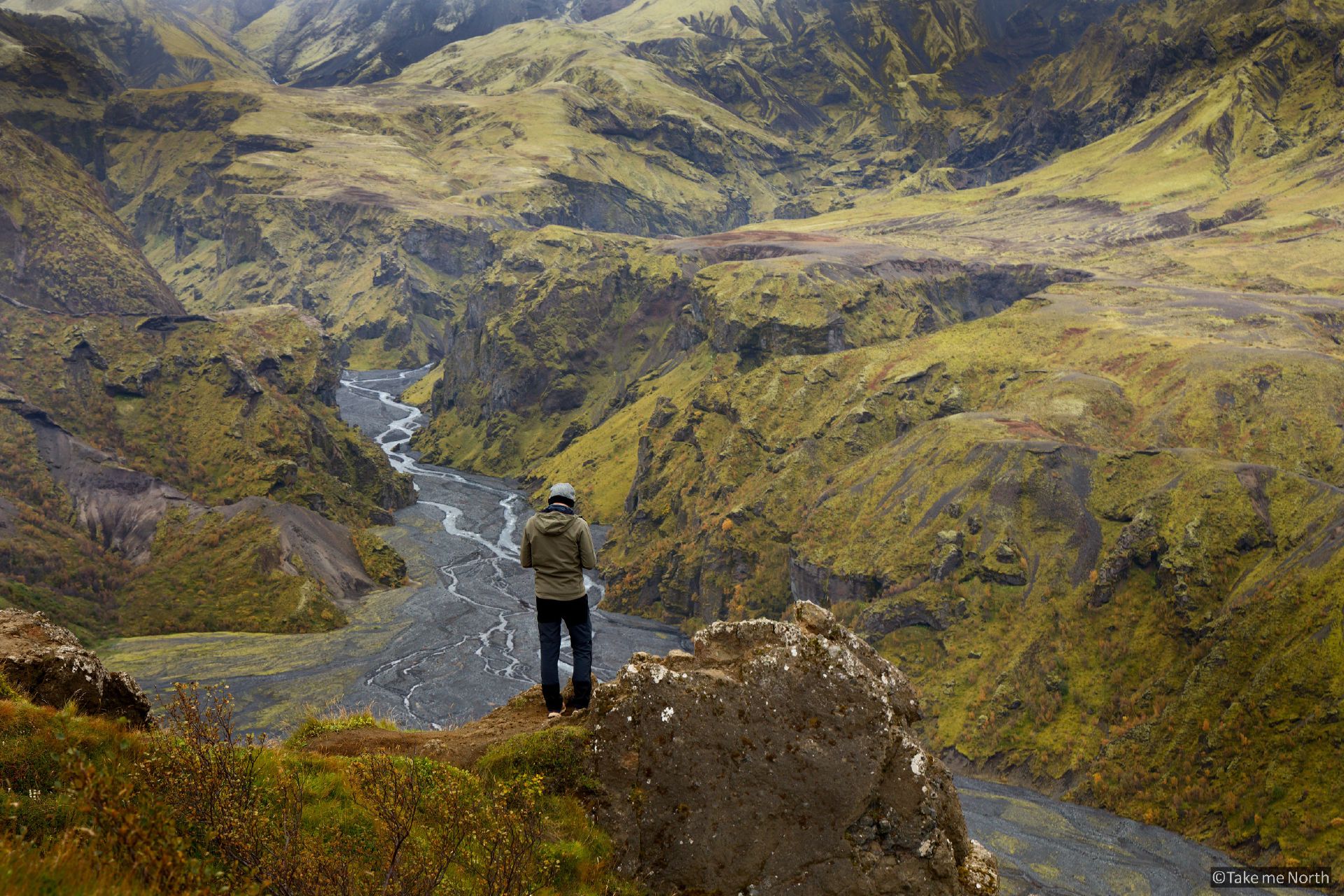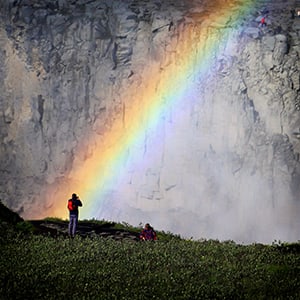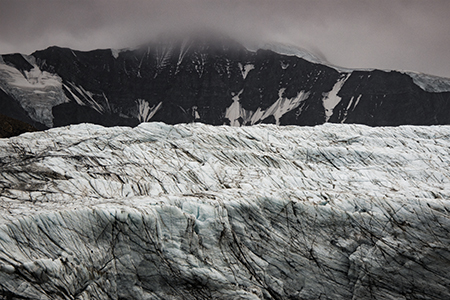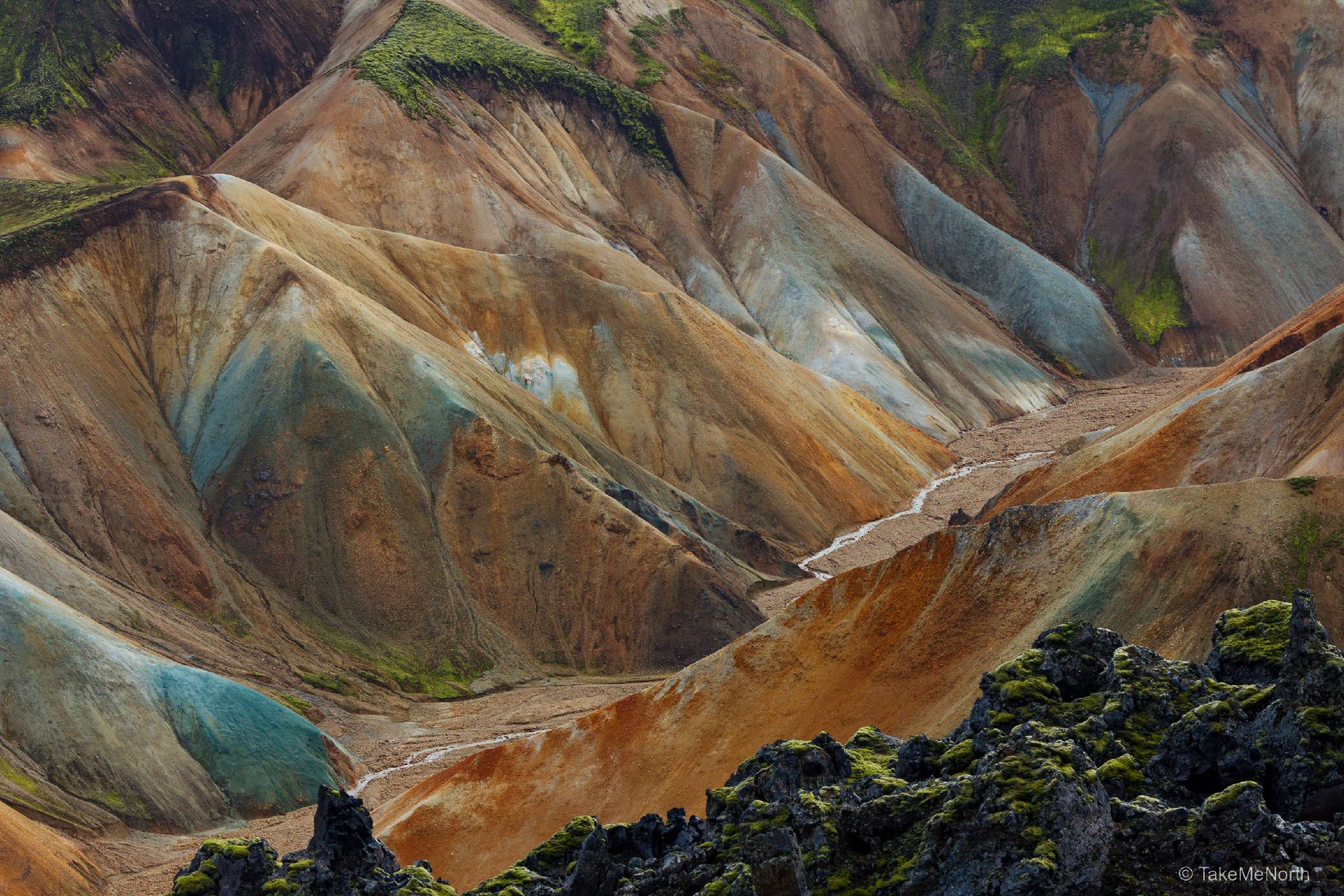Most of the time, Icelandic place names are wonderfully self-explanatory. Reykjavík means “Smoky Bay.” Selfoss is “Seal Waterfall.” Hveragerði is simply “Hot Spring Field.” When you know even a little Icelandic, the map reads like a story. But sometimes, the names carry more than one meaning—hints of old sagas, half-remembered myths, and whispers of a time when gods and giants walked the land.
Take Þórsmörk, for example. At first glance, you might translate it as Thor’s Forest (mörk meaning “forest” or “woodland”). That seems fitting—after all, it’s one of the greenest places in Iceland, a sheltered valley where birch trees cling to the volcanic soil and moss spreads like a living carpet. But mörk can also mean border or frontier. That shifts the meaning entirely: Thor’s Border.
And suddenly, the imagination sparks. Some say Þórsmörk was the very place where Thor brought down Mjölnir, his thunderous hammer, to draw a line between worlds. One side for trolls, the other for elves. A ceasefire in a war too vast and too ancient for humans to understand. A hammer strike that carved rivers and valleys, leaving behind a landscape that still feels charged with unseen energy.
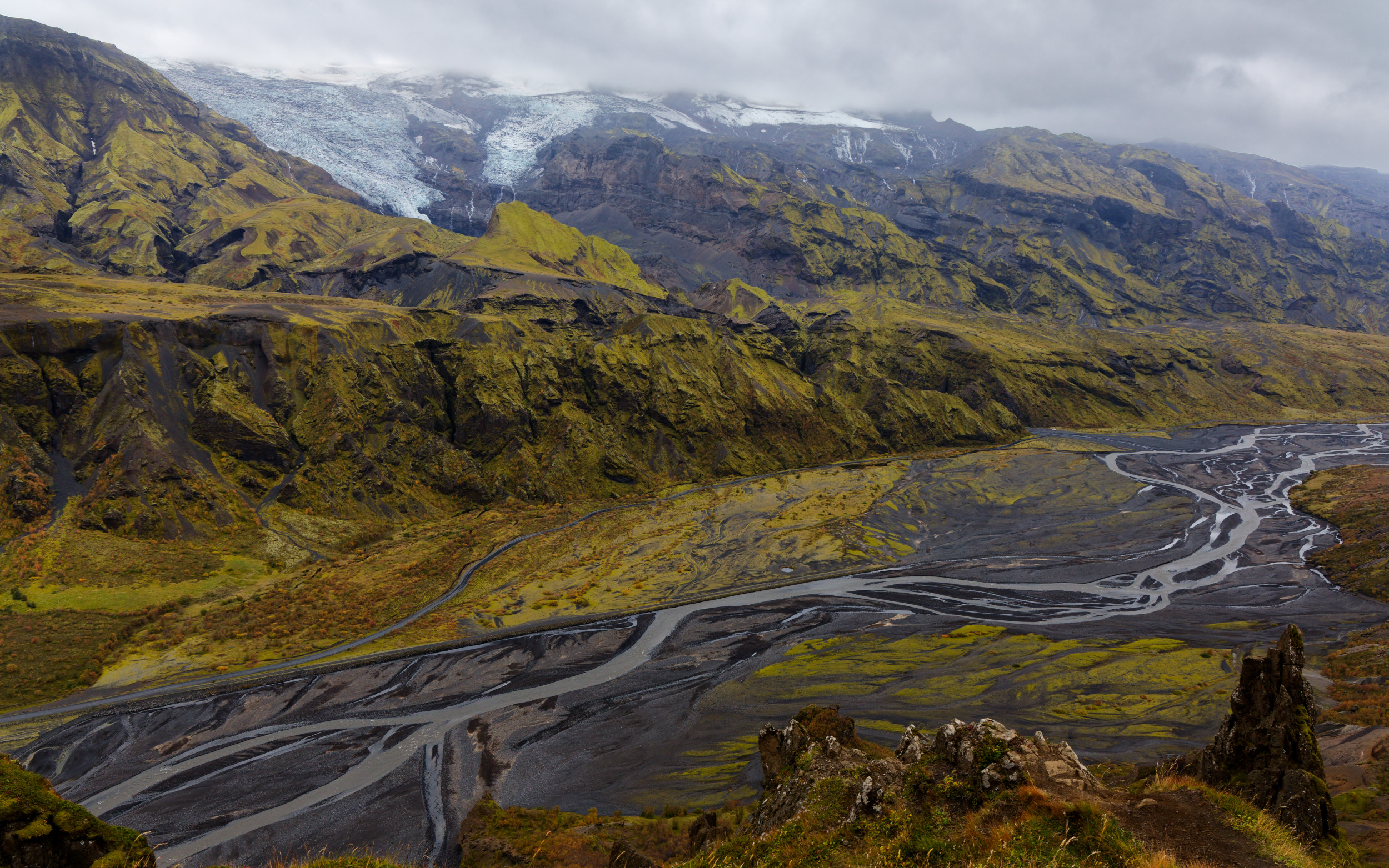
Eyjafjallajökull, named after the volcano beneath it. The volcano erupted in 2010, disrupting air traffic across Europe.
Whether you lean toward “forest” or “border,” stepping into Þórsmörk feels mythic. Surrounded by glaciers—Eyjafjallajökull to the south, Mýrdalsjökull to the east, and Tindfjallajökull to the north—it’s as if the valley itself is cradled by icy guardians. Braided rivers twist through the land, constantly shifting, reminding you that borders in Iceland are never fixed but alive, moving with meltwater and storms.
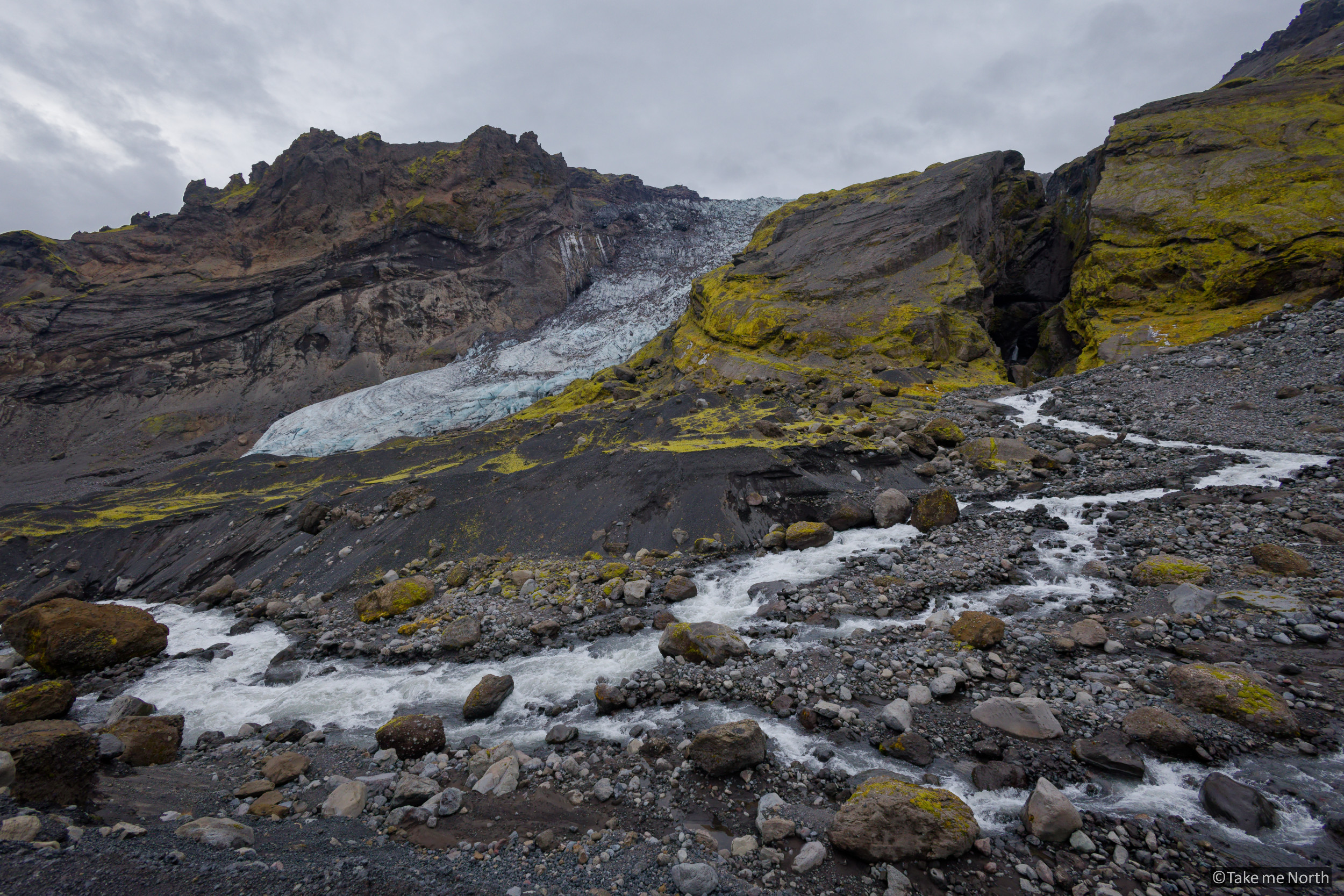
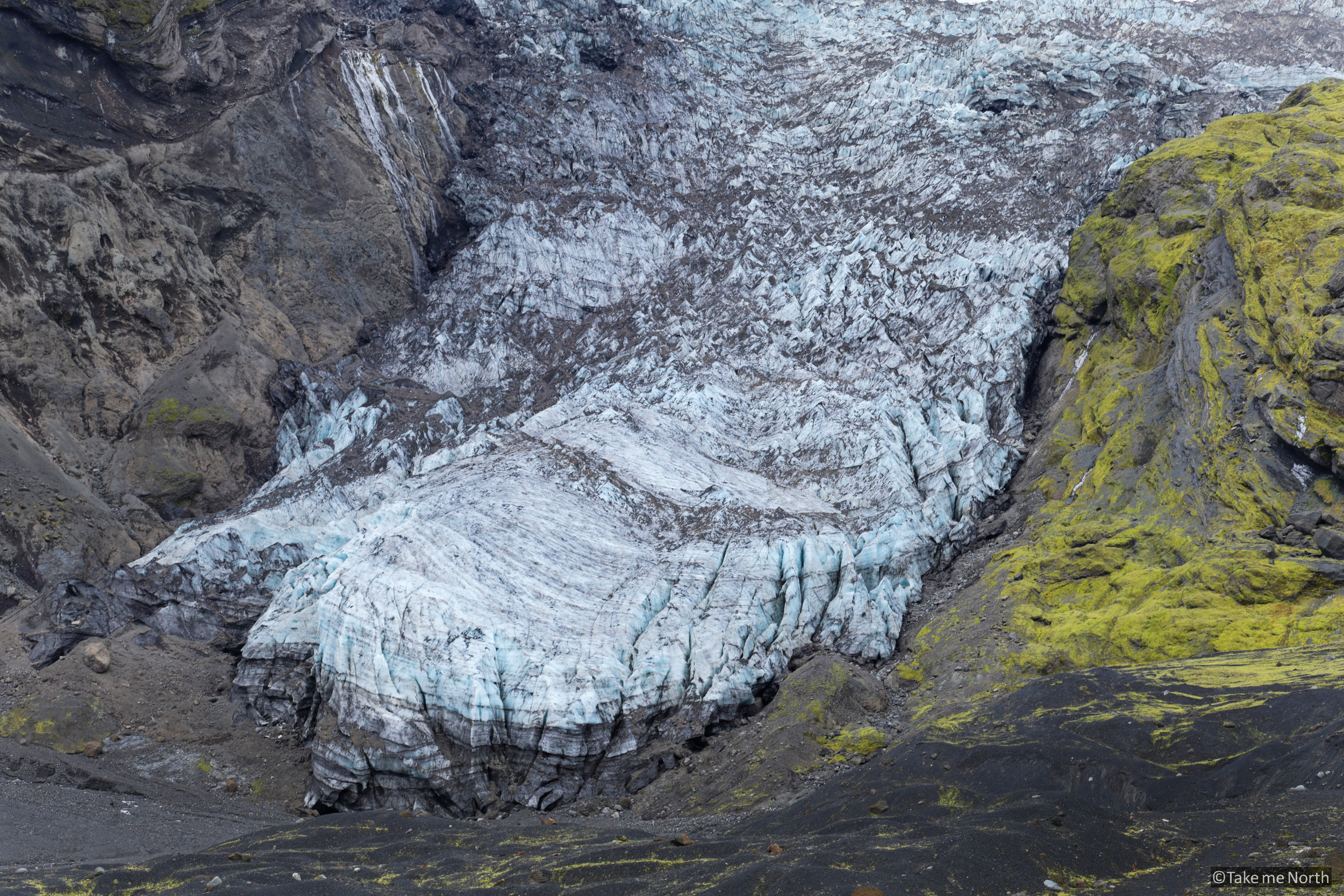
Gigjoküll is one of the only glacier arms in Iceland that is currently surging (2025)
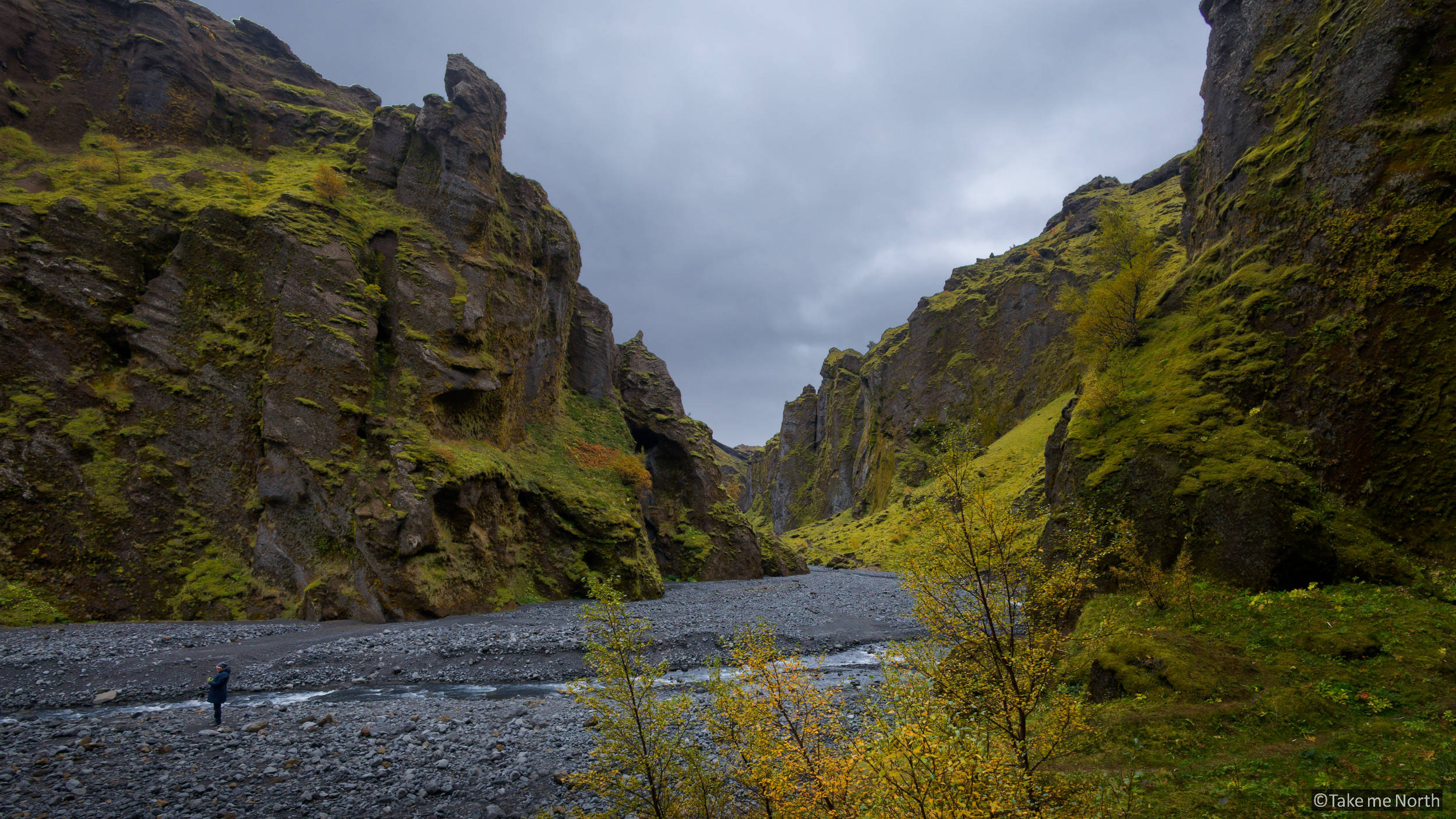
Stakkholtsgjá.
